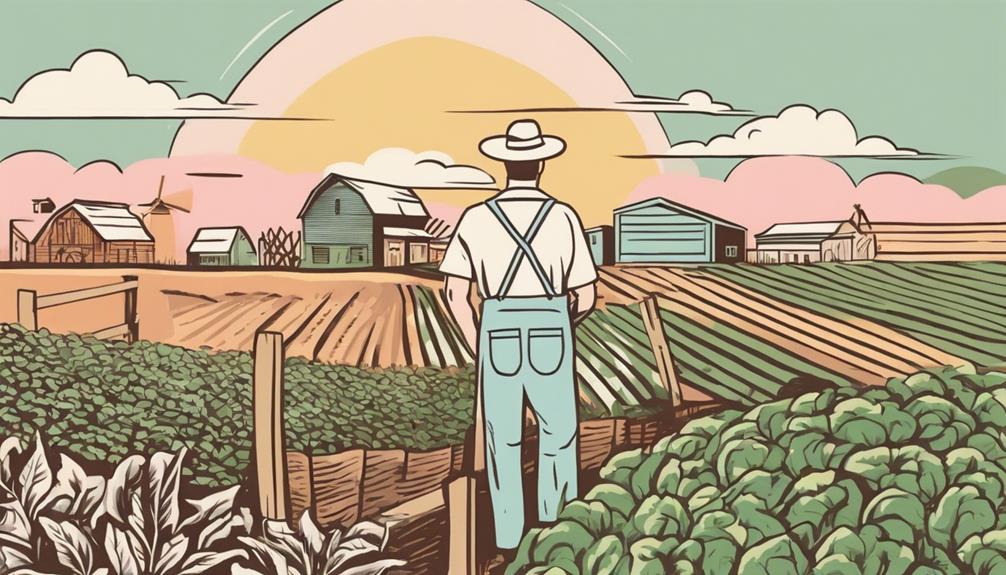How To Become More Self-Sufficient Without Starting a Full-Blown Farm…
Want to start preserving your harvest, making your own soap, or building a backyard root cellar — but not sure where to begin? “Homesteading Advice” gives you instant lifetime access to 35+ practical homesteading books on food preservation, veggie gardening, DIY natural cleaning products (save over $250 per year with this skill alone), brewing, off-grid energy, and a whole lot more…
Click Here To Check It Out Now!
“I just moved to Portland, Oregon, and I’m planning to start a backyard farm. I know the climate here has distinct seasons with wet winters and dry summers. Can you guide me on how to choose the best crops that will thrive in this climate?” Thanks, Patrick, Portland, USA.
How Do I Choose Crops For My Climate?
When planning a backyard farm, understanding your local climate is absolutely key to selecting the right crops. Climate can greatly influence your gardening success, and making informed choices will help ensure a productive and enjoyable gardening experience. Let’s explore some methods for identifying crops that will thrive in your specific climate, just like Patrick in Portland, Oregon.
Understanding Your Climate Zone
The first step is to identify your climate zone. Climate zones are regions defined by long-term weather patterns, including temperature and rainfall. In the U.S., the USDA Hardiness Zone Map is a handy tool for this.
Research Local Weather Patterns
Understanding the typical weather patterns in your area will help you plan effectively. Portland, for example, has mild, wet winters and dry summers. Knowing this helps you predict temperature extremes, which is significant for crop planning.
Selecting Crops Based on Seasons
- Cool-Season Crops: Crops such as lettuce, spinach, and peas thrive in cooler temperatures and can be planted in early spring or fall.
- Warm-Season Crops: Tomatoes, peppers, and cucumbers prefer warmer temperatures and should be planted after the last frost in late spring.
Choosing Drought-Resistant Crops
Since Patrick’s climate features dry summers, it might be wise to select crops that can withstand periods of low water availability. Some excellent drought-resistant crops include:
- Sweet Potatoes: These tubers are known for their resilience in dry conditions.
- Beans: Both bush and pole beans require relatively little water once established.
- Squash: Varieties like zucchini are particularly hardy in drier climates.
Utilizing Microclimates
A microclimate is a localized climate area within your garden. Understanding microclimates can help you make the most of your space:
For example, south-facing walls in Patrick’s Portland backyard might create warmer spots suitable for heat-loving crops like tomatoes or peppers. Conversely, shaded areas could be ideal for leafy greens or herbs.
Native Plants and Heirloom Varieties
Planting native species or heirloom varieties that grow naturally in your area can be a fantastic way to ensure your garden thrives.
- Benefits of Native Plants: They are adapted to local soil and weather conditions, making them easier to care for and more resilient.
- Heirlooms: These varieties have been passed down through generations and often have superior flavor and disease resistance.
Cropping Calendar
Creating a cropping calendar can help you map out when to plant each crop. This is particularly useful in regions with distinct seasons like Patrick’s.
Start with cool-season crops in early spring and follow with warm-season crops as the weather heats up. In the fall, return to cool-season varieties.
Soil Preparation and Maintenance
Healthy soil is a cornerstone of successful farming. Understanding your soil type and its needs will improve crop yields:
- Soil Testing: Conduct a soil test to determine pH levels and nutrient content.
- Composting: Add organic matter to enrich your soil and improve its structure.
- Mulching: Helps retain moisture and regulate soil temperature.
Consider Disease and Pest Resistance
Selecting crop varieties that are resistant to local pests and diseases will reduce the need for chemical interventions and improve your chances of a successful harvest.
Look for seed packets or plant labels that mention resistance to common issues in your area.
Consulting Local Expertise
Engaging with local gardening clubs or agricultural extensions can offer valuable, tailored advice. People familiar with local conditions can provide insights into what works best and common pitfalls to avoid.
Final Thoughts…
Patrick, the key to a thriving backyard farm lies in understanding your specific climate and tailoring your crop choices to it. By selecting plants suited to your local conditions, you set yourself up for a fruitful and enjoyable gardening experience. Remember, patience and observation are your greatest tools. Thanks for your insightful question, and happy gardening!

